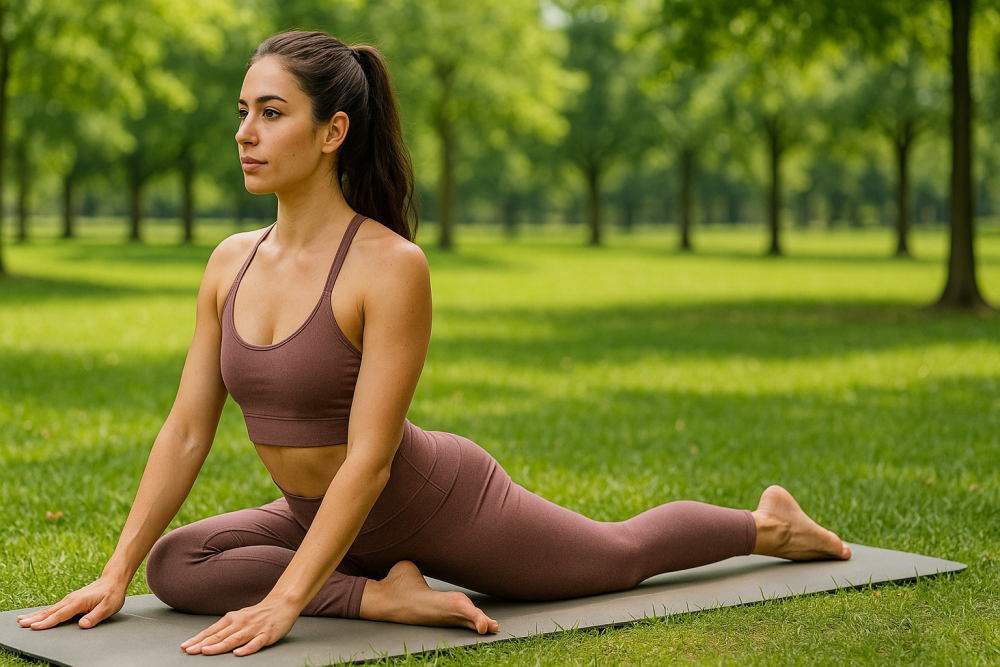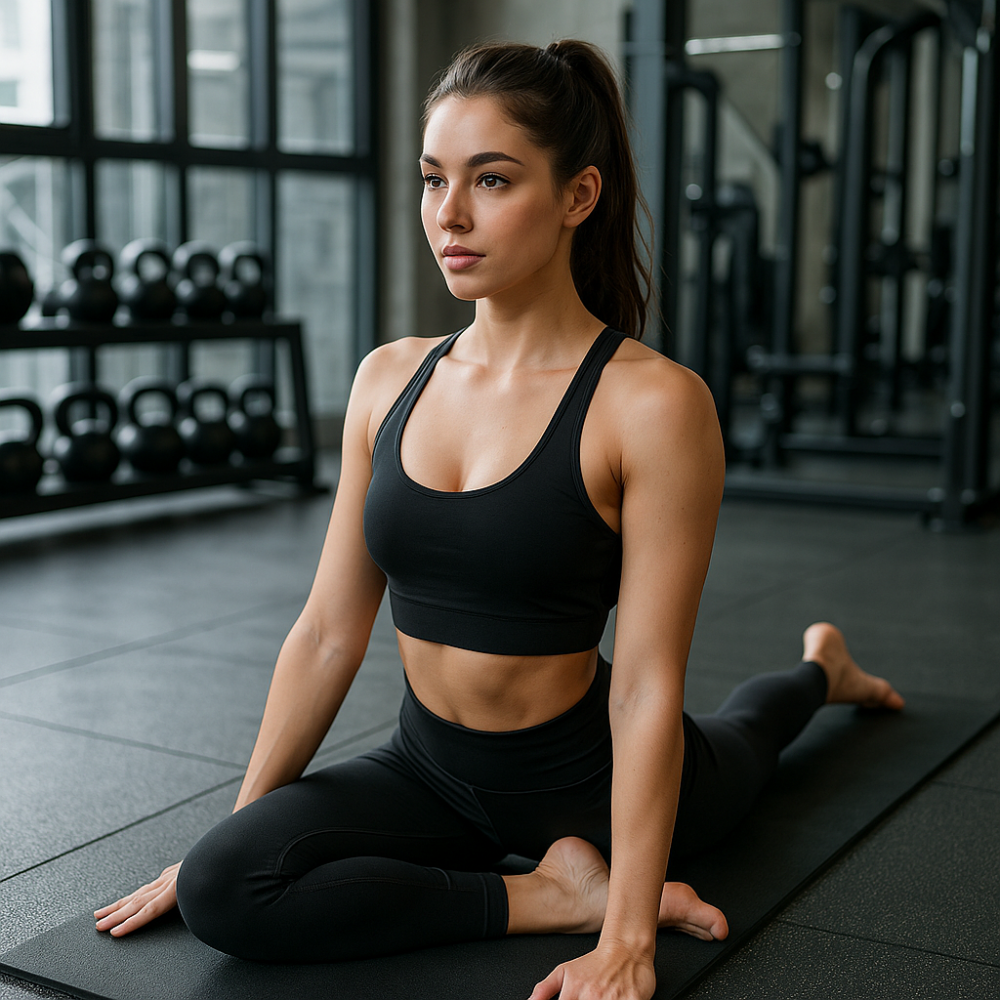Contents
Pigeon Pose Stretch
Open Your Hips and Release Tension
The Pigeon Pose Stretch, also known as “Eka Pada Rajakapotasana” in yoga, is a powerful hip opener that targets deep muscle tension, especially around the glutes and piriformis. This pose is popular among yogis, runners, martial artists, and anyone who experiences tight hips from prolonged sitting or intense training. Practicing the Pigeon Pose regularly can significantly improve flexibility, relieve lower back discomfort, and increase overall mobility.

Benefits of the Pigeon Pose Stretch
This pose offers a wide range of physical and mental benefits:
- Stretches the hip flexors, glutes, and piriformis
- Releases stored tension in the lower back and hips
- Improves posture and spinal alignment
- Aids in digestion through gentle abdominal compression
- Promotes emotional release and relaxation through deep breathing
Recommended Sets and Duration
For best results, aim to hold the Pigeon Pose for 30 seconds to 2 minutes per side, depending on your flexibility level. Complete 2 to 3 sets on each leg, taking a short break between sides.

Pigeon Pose Stretch Step-by-Step Guide
- Start in Downward-Facing Dog
Begin on your mat in Downward-Facing Dog. From there, lift your right leg and bring it forward toward your hands. - Position Your Front Leg
Place your right knee behind your right wrist and angle your right shin slightly inward. Your right ankle should be near your left hip. - Extend the Back Leg
Slide your left leg straight back behind you, keeping the top of your foot flat on the ground and your hips square to the front. - Lower Your Upper Body
Inhale to lengthen your spine. As you exhale, gently lower your upper body over your front leg. You can rest on your forearms or stretch your arms forward with your forehead on the mat. - Breathe and Hold
Relax into the pose and take slow, deep breaths. Hold for 30–120 seconds, then slowly rise and return to Downward-Facing Dog. Repeat on the other side.

Variations of Pigeon Pose
- Reclined Pigeon Pose (Figure Four Stretch):
This gentle variation is ideal for beginners, individuals with tight hips, or those experiencing knee sensitivity. It’s performed lying on your back, crossing one ankle over the opposite thigh. You gently pull the uncrossed leg toward your chest to stretch the outer hip and glute of the crossed leg. This is a safe and effective way to open the hips without putting weight on the joints. - Seated Pigeon Pose:
Perfect for office workers or people with limited mobility, this version is done while sitting in a chair. Cross one ankle over the opposite knee and gently lean forward, keeping the back straight. It provides a mild but effective stretch in the hips and glutes, making it easy to incorporate into a daily routine. - King Pigeon Pose (Advanced):
This more advanced variation involves bending the back leg and reaching your arms overhead to grasp the foot, adding a deep stretch to the quads, hip flexors, and back. It also improves spinal flexibility and requires proper warm-up and mobility. Recommended only for experienced practitioners with open hips and shoulders.

Pigeon Pose Stretch Tips and Recommendations
- Always warm up first. Prepare your body with dynamic stretches or light yoga flows that target the hips, glutes, and hamstrings before moving into Pigeon Pose to reduce the risk of injury.
- Use props for support. Place a yoga block, cushion, or folded blanket under the hip of the front leg if it doesn’t touch the floor. This maintains alignment and eases strain on the joints.
- Listen to your body. Avoid forcing the pose. If you feel sharp or shooting pain in your knee, hip, or lower back, back out of the position and opt for a gentler variation.
- Focus on your breath. Inhale deeply and exhale slowly. Conscious breathing helps you relax into the stretch, enhances flexibility over time, and supports a meditative state of mind.
- Stay aligned. Keep the hips squared forward and avoid collapsing to one side. Use a mirror or guidance from a yoga instructor to check your posture.
Final Thoughts
The Pigeon Pose Stretch is a deeply restorative and effective way to release tight hips and improve flexibility. Whether you’re recovering after a workout or simply trying to relax and stretch after a long day, this pose is a valuable addition to your routine. With consistent practice and proper form, you’ll notice greater ease in movement and reduced discomfort in the hips and lower back.
If you’re looking to build a more flexible, mobile, and pain-free body, add the Pigeon Pose to your weekly stretching sessions and feel the difference.
Follow our Social Media!












